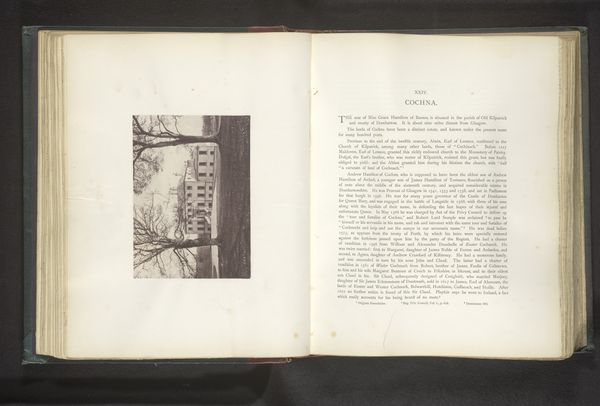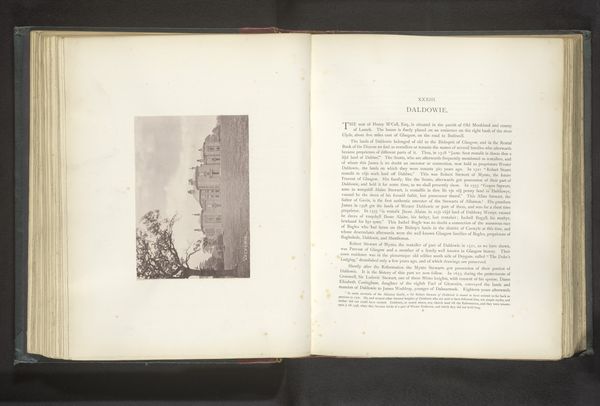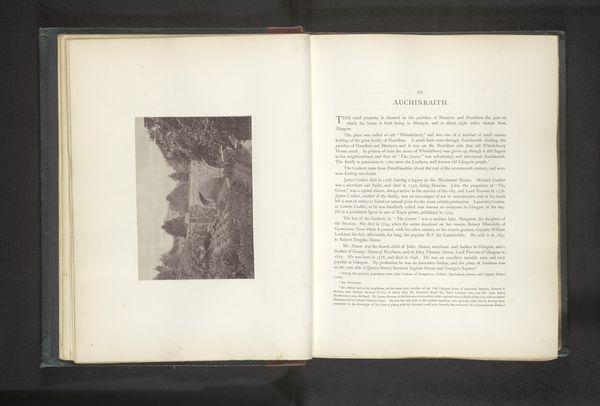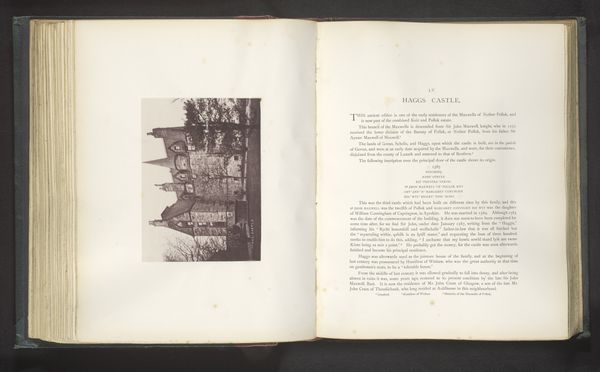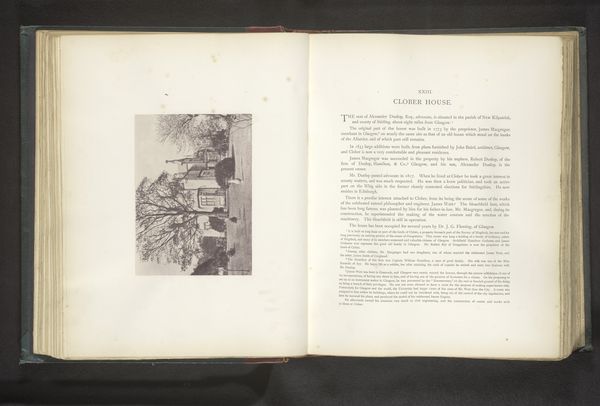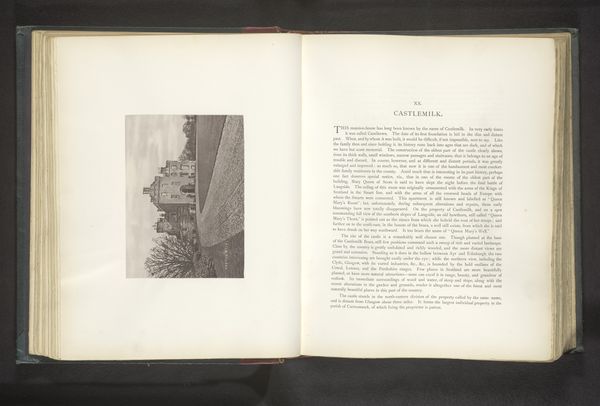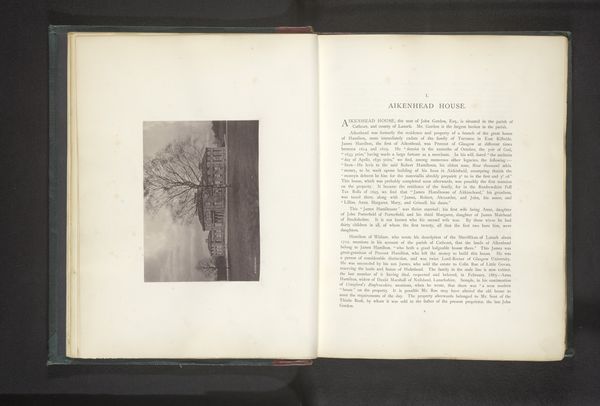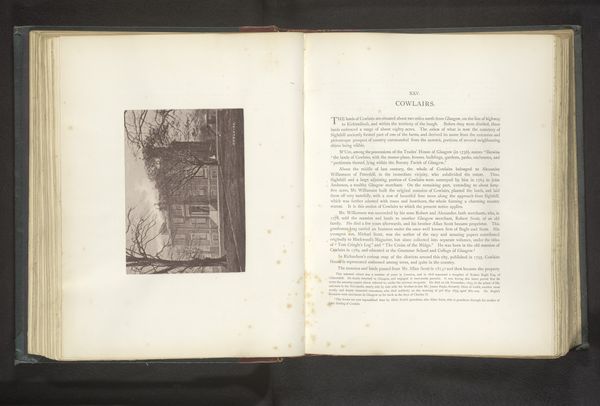
print, photography
# print
#
landscape
#
photography
#
building
Dimensions: height 115 mm, width 160 mm
Copyright: Rijks Museum: Open Domain
Curator: Here we have Thomas Annan's photograph "Ballancleroch," dated before 1878. What strikes you first? Editor: The overall impression is quite somber, isn’t it? The gray tones lend a melancholic feel to the scene. It feels like peering into a fading memory. Curator: Let's delve into Annan’s process. As a photographer primarily focused on documenting social conditions and architecture, his images like these became key artifacts in understanding Victorian-era shifts and material conditions. Editor: Indeed, but the photograph also functions as an evocative symbol. The building itself stands as a visual anchor, possibly signifying stability, while the enveloping landscape might represent the passage of time and the ephemerality of existence. Curator: What I find particularly compelling is the tangible texture. We're looking at a print, but you can almost feel the rough stone of the building, the dense foliage surrounding it. This connects to the very real conditions it represents: property, resources, labor... Editor: From an iconographic standpoint, the light and shadow at play here could suggest something further, too. The way the sunlight filters through the trees almost seems like a divine presence watching over this dwelling and by extension perhaps the family within? Curator: And how fascinating that it is placed in the pages of a book, perhaps removed now from the actual material conditions into the realm of record. Editor: A record perhaps aiming to transform the familiar landscape into something symbolic and lasting. Food for thought! Curator: Absolutely! This photograph lets us touch the past through materials and method, giving historical narratives tangible form. Editor: And for me, Annan's photograph transforms an old estate into a powerful emblem of permanence and the slow, patient forces of nature and history.
Comments
No comments
Be the first to comment and join the conversation on the ultimate creative platform.
